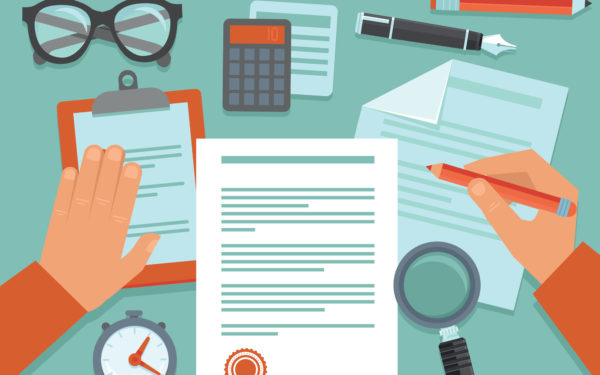If you are planning to get a driving license in the Kingdom of Bahrain, we…
10 Cycling Recovery Tips: How to Maximize Your Rest Days

When preparing for a big race, it’s tempting to pack in as many kilometers as possible and push yourself harder than you should, especially on the ‘easy’ rides.
While we all know that substituting a bicycle recovery ride for a race is probably not the greatest option, taking your foot off the throttle can be more difficult than it seems. That is an issue.
“One of the faults many riders make is not recuperating enough,” says extreme endurance pro cyclist James Mark Hayden, winner of The Transcontinental Race, a 4,000km self-supported cycling race across Europe in 2017 and 2018. “However, without recuperation, your body does not have time to heal muscle damage, and you cannot become stronger or push hard when needed.”
Recovery is important to James, as it is to most successful professional cyclists.
“Because I push myself so hard, I need to be equally as active with my riding recovery as I am with my training,” he adds. “For lifespan and fun on the bike, I would recommend prioritizing ride recuperation above training.”
Here are some of the reasons why cycling rehabilitation is so crucial.
A cyclist’s plan must include time for recovery.
When you exercise, you are stressing your body and breaking down muscles, and it is during recovery that these muscles heal, adapt, and get stronger so that the same activity seems easier the following time.
If you don’t allow yourself time to rest and heal after a ride, you’ll stagnate and put yourself at danger of illness, injury, and over-training. Rest days are critical.
How many rest days should I include in my training plan?
Striking a balance between relaxation and exercise might be more difficult than it appears. If you take too many rest days, you risk becoming stagnant; if you take too few, you risk overtraining.
While most off-the-shelf training regimens include rest days, there is no one-size-fits-all solution. Everyone is unique in terms of age, cycling experience, employment and family responsibilities.
“Listening to your body is the greatest way to determine if you need a rest day”.
“During training, I typically have at least one day totally off the bike and one easy day, but if I haven’t slept well or feel unwell, everything I’ve planned will go out the window and I’ll need additional time to recover.”
The following are indications that you may require additional rest:
an increased heart rate, feeling mentally fatigued, and being unable to meet your training objectives
Learning to recognize your body’s messages, on the other hand, is a talent that requires practice.
These bike recovery strategies can assist you in resting up for a better performance in the saddle.
The following are our top ten cycling recovery tips:
Take some time to relax.
Raise your legs.
Drink cycling recovery drinks to stay hydrated.
Consume carbohydrates and protein.
Try some self-massage.
Incorporate some mobility exercises.
Consider wearing compression clothes.
Try out active recovery.
Get some good rest.
Allow your thoughts to relax as well.
- Take some time to relax.
Who among us hasn’t jumped right off the turbo after a difficult set? A cool-down may take more time, but finishing each bike ride with at least 10 minutes of easy pedaling allows the body to recover to its pre-exercise state.
Spinning the legs circulates circulation throughout the body and aids in the removal of metabolic waste products from the muscles, which aids in the healing process.
- Raise your legs
If you’ve just completed a strenuous training ride, resting down with your legs against a wall can assist drain fluids that may have accumulated in your legs, minimize swelling, and gently stretch your hamstrings, all of which aid in recovery.
It will help restore blood flow to the brain if you are feeling faint or dizzy.
- Drink cycling recovery drinks to stay hydrated.
While most of us drink little and often on the bike, dehydration is more probable after a hard or lengthy training session especially in hot conditions.
This makes it more difficult for your heart to circulate blood and oxygen throughout your body, delaying the healing process.
When you return from a short, easy ride, drinking water should enough, but if you’ve had a long day.
- Consume carbohydrates and protein.
Nutrition is an important tool in your healing arsenal (see our article on cycling nutrition).
After a lengthy or difficult session, consuming carbohydrates to replenish the energy lost during exercise will increase your glycogen levels, whilst protein will assist repair muscles and reduce muscular pain.
- Try some self-massage.
While it would be ideal to book a sports massage once a week, not everyone has the time or the money to do so.
Fortunately, self-massage equipment such as foam rollers, massage balls, and sticks provide comparable advantages by assisting in the removal of waste products, the reduction of inflammation, and the stimulation of blood flow to promote healthy healing.
- Incorporate some mobility work
Mobility training will keep your muscles flexible and in good shape, lowering your risk of injury. It also helps your muscles to operate through their whole range of motion during exercise, which can increase performance.
- Consider wearing compression clothes.
While further research is needed to establish its effectiveness, compression gear is meant to enhance blood flow while decreasing swelling and post-exercise pain, and many bikers, like James, are enthusiasts.
Compression garments (such as compression tights) should be worn for two to four hours after exercise, according to the manufacturers.
- Attempt active recovery.
Rest and recuperation typically entail putting your feet up and doing nothing. However, in rare circumstances, like as the days following a major race, active recuperation may be helpful.
Active recuperation entails engaging in some sort of activity, such as a gentle spin on the bike to get the blood flowing.
- Get some good rest.
Your body generates human growth hormones during deep sleep, which encourages muscle development and repair.
A lack of sleep may make you irritable and distracted, raise the production of the stress hormone cortisol, and increase your rate of perceived effort, making exercise feel much more difficult. In summary, if you want to recuperate and train at your best, you need to get some good shut their downtime.
- Allow your thoughts to relax as well.
You must not only allow your body to relax and recuperate, but you must also allow your mind to rest and heal, especially if you are training while also juggling other obligations such as job and family.
After a major race, I plan to take up to two months off from training and competing.
After a race, it’s a wonderful opportunity to meet up with friends, try new sports or workout courses, and just relax so you can get back in the saddle emotionally and physically rejuvenated.
akomakoo.com is the website for users to find new and used cycles, bicycles in the Kingdom of Bahrain and the Eastern Province of Saudi Arabia. Launched in 2020, by Abdul Hamid Al Asfoor (Managing Director of Albayan Media Group), akomakoo.com has become the most exclusive and leading platform connecting buyers and sellers from Saudi Arabia to Bahrain and vice versa.
An exclusive and trusted community where underused goods are redistributed to fill a new need, and become wanted again, where non- product assets such as space, skills and money are exchanged and traded in new ways that don’t always require centralized institutions or ‘middlemen’.




